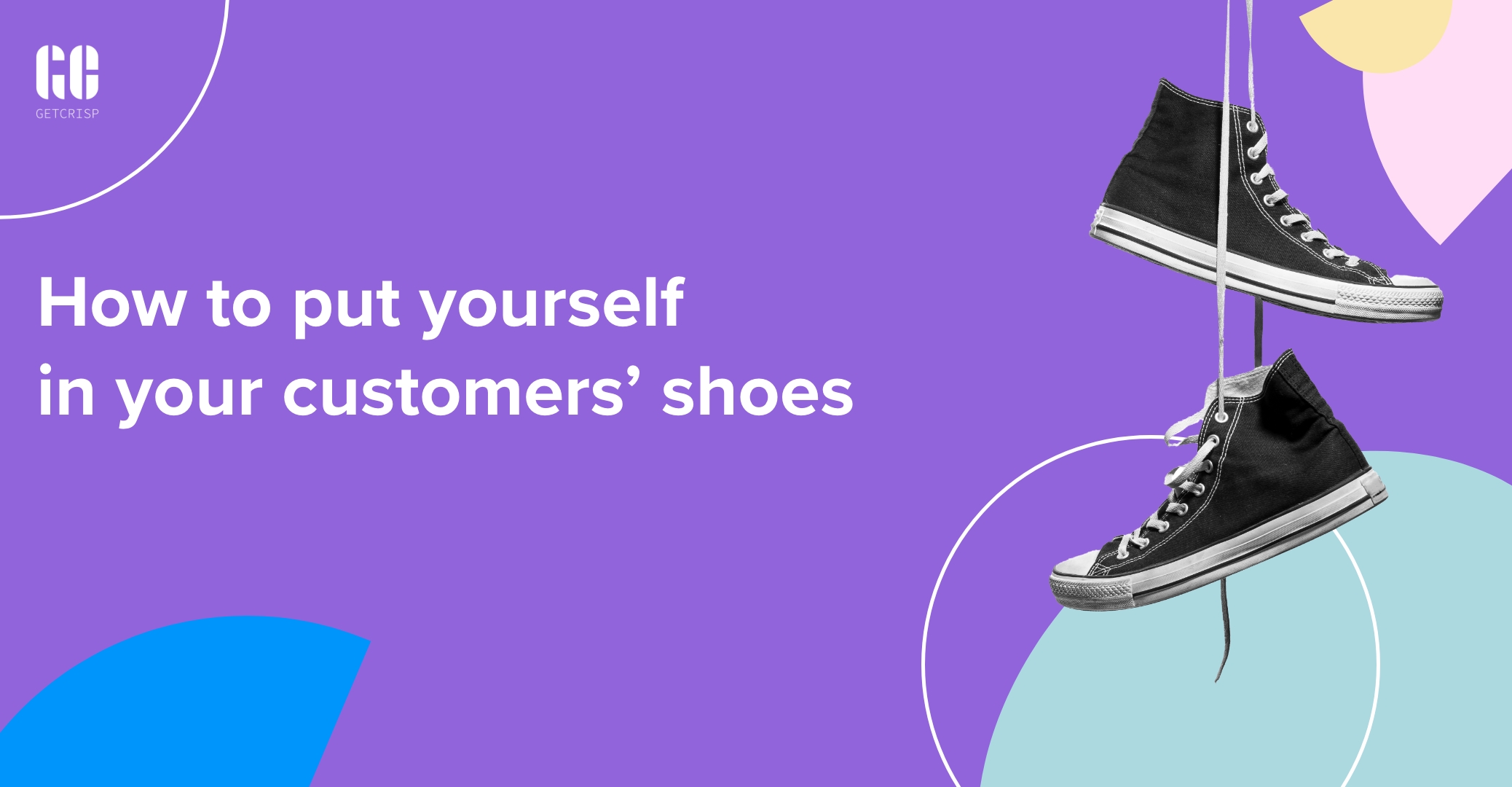Many businesses boldly state they understand the needs of their customers, and many successful companies do. But how do businesses manage to keep customer satisfaction and loyalty high?
When running a business, understanding your customers is one of the most important things to focus on. By putting yourself in your customers’ shoes, it helps you to better understand their needs, preferences, and motivations.
This can be useful for a variety of reasons, including improving the user experience (UX) of your website or app, developing new products or services, and creating marketing campaigns that are more effective and relevant to your target audience.
Why you should view your services from a customer’s viewpoint.
To create personalised and engaging experiences for you customers you really need to gain insight into their perspective. By looking at your services from their point of view, it can help you identify and understand their pain points and challenges.
Once you look at services from their viewpoint, you can tailor solutions that address their specific needs rather than just ticking a sales box. By putting yourself in your customers’ shoes, you are likely to gain higher levels of satisfaction and loyalty.
Why do your customers really buy from you?
It can be easy to fall into the trap of confirmational bias when trying to identify why a customer buys your product or service. Some common assumptions that are made are “the customer buys from me because they like me” or “the customer only cares about price”. In reality there are a range of criteria that can affect the buying process.
In a non-design-led market, the customer will often have a functional reason for buying a service, a need that is to be filled or a pain that needs to be resolved. These factors are called pain points.
Customer pain points are the specific challenges, difficulties, or frustrations that customers experience when interacting with a company or using its products or services. These can be problems with a product itself, such as quality issues or a lack of features. They can be related to experiences, such as poor customer service or a confusing checkout process.
Identifying and addressing customer pain points is an important part of improving the customer experience and ensuring customer satisfaction. By understanding the specific problems that customers are facing, companies can take steps to address those issues and improve the overall customer experience.
How do you identify customer pain points?
One way to identify customer pain points is to gather feedback directly from customers through surveys, interviews, or focus groups. Not only can this provide insight into the specific challenges and difficulties that customers are facing, but it can help identify common problems that need to be addressed.
Additionally, analysing customer behaviour and interactions with your company can also provide insight into potential pain points, such as areas where customers are frequently encountering difficulties or becoming frustrated.
It can also be helpful to look at industry trends and research to see what common challenges customers in that industry are facing, and how your company can address them.
Keep up to date with customer feedback.
Acting on a customer’s feedback demonstrates to them that you care about what they have to say. This acknowledgement could be in the form of a like on a comment on social media, replying promptly to emails or even reposting their reviews on your business’s social media. This act will help strengthen your business’s human side.
Let’s look at the several ways you can stay up to date with customer feedback:
- Monitor social media and review sites for comments and reviews from customers. This can give you a sense of how customers are responding to your products or services, and highlight any issues or concerns that need to be addressed.
- To identify trends and patterns in customer feedback, use tools such as surveys or feedback forms to gather more structured and in-depth feedback from customers. Doing this regularly will help you track changes over time.
- Engage with customers directly through channels such as email, phone, or live chat. This can give you an opportunity to hear directly from customers and respond to their feedback in real-time.
- To identify areas where customers are having problems, use customer support channels, such as call centres or online help desks. This will highlight the kinds of issues and concerns that are being raised by customers. It will allow you to take steps to improve customer experience in the future.
By using a combination of these techniques, you can keep up to date with customer feedback and use it to improve your products, services, and overall customer experience.
Market Pain Relief
When it comes to marketing your services, use the information you learn from your customer feedback. Use it to highlight how you solve common pain points.
Simply put, sell benefits not features.
Customers are primarily concerned with how a product or service will solve their problems or improve their lives, rather than the individual features that it includes. By focusing on the benefits that a product or service offers, companies can better demonstrate its value to customers and show how it can help them achieve their goals or address their needs.
Focusing on benefits is an effective way to market a product or service, as it directly addresses the customer’s needs and concerns, rather than simply listing off a series of features that may not be relevant or compelling to the customer.
Pain points and business success
Identifying customer pain points is not an easy task but is crucial for the success of your business. To find out more about how we can help you, get in touch!
